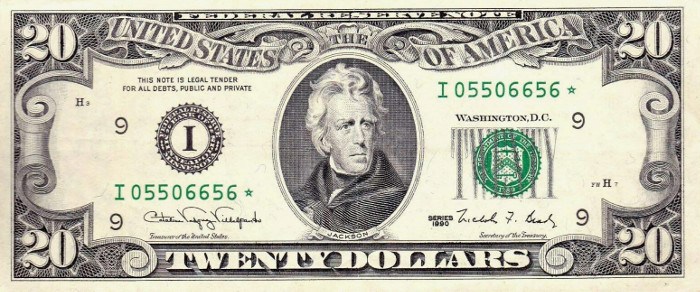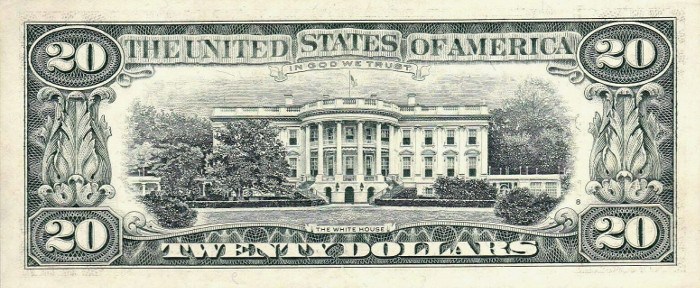Most 1990 twenty dollar bills aren't very valuable. However star notes can sell for more money. Continue reading to learn more about these bills.


Specifications
| Denomination: | $20.00 USD |
| Type: | Federal Reserve Note |
| Signature Combinations: | One: Villalpando and Brady |
| Series: | One: 1990 |
The 1990 series $20 bills were printed at two different locations- Washington D.C. and Fort Worth, Texas. The location can affect the value. Notes printed in Fort Worth, Texas can be identified by a small "FW" on the front of the bill next to the green seal.
Value
The standard bills in circulated condition won't be worth more than their face value of $20. They will only sell for a premium in uncirculated condition. Star notes can sell for higher prices.
Most 1990 series $20 bills printed in Washington D.C. are worth around $30-35 in uncirculated condition with a grade of MS 63. Bills issued from the Federal Reserve Bank of Minneapolis can sell for more money.
The value of the 1990 series $20 bills printed in Fort Worth, Texas depends on the issuing bank. Bills issued from the Federal Reserve Bank of Minneapolis are worth around $50 in uncirculated condition with a grade of MS 63. Bills issued from the Federal Reserve Bank of San Francisco are worth around $40 in uncirculated condition with a grade of MS 63.
Star Notes
Star notes are replacement bills that the United States Federal Reserve printed. These star notes are more rare and thus more valuable. You can tell if you have a star note by looking to see if there is a star symbol at the end of the serial number.
The 1990 series $20 star notes are worth around $35 in extremely fine condition. In uncirculated condition the price is around $80-85 for notes with an MS 63 grade.
Grading System
Extremely fine- A note that shows small signs of having been in circulation. The note will be bright and it will have almost all of its original crispness. There might be one or two minor creases or folds but there are no stains, discolorations, or tears.
MS 63 choice uncirculated- A note that shows no signs of ever having been in circulation. The note still has its original crispness. The note is also well-centered.
Sources:
A Guide Book of United States Paper Money
See also:
